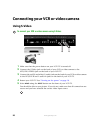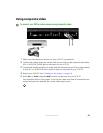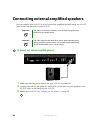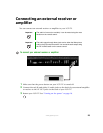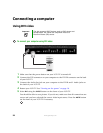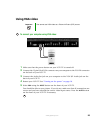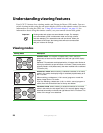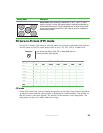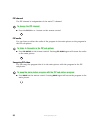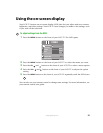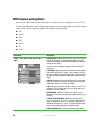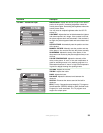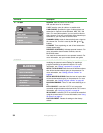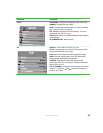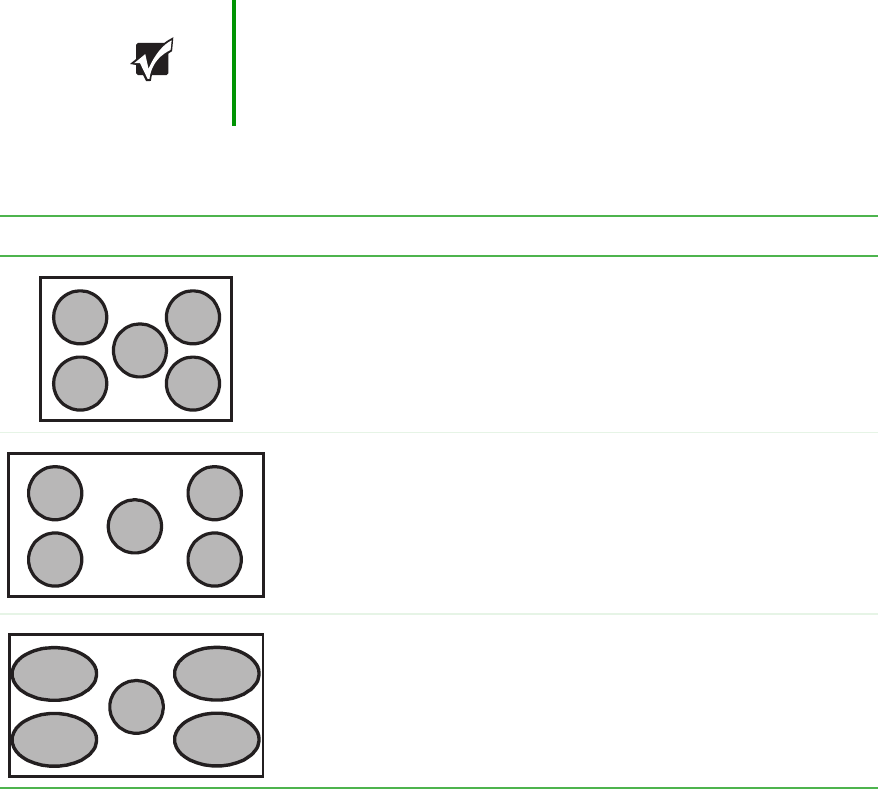
28
www.gateway.com
Understanding viewing features
Your LCD TV features four viewing modes and Picture-in-Picture (PIP) mode. You can
switch viewing modes using the on-screen display (OSD) or the remote control. For more
information on using the OSD, see “Using the on-screen display” on page 31. For
information about using the remote control, see your remote control user guide.
Viewing modes
Important Viewing mode and volume are saved based on input. For example,
you last watched a DVD in widescreen mode and at high volume,
and then watched TV in standard mode and low volume. When you
switch back to DVD input, the viewing mode will return to widescreen
and your volume will be high.
Viewing Mode Description
Standard mode. The original 4:3 aspect ratio (1.33:1 source) is
preserved, so black bars are added to the left and right of the display
image.
Standard TV broadcasts are displayed with a 4:3 aspect ratio. Movies in
4:3 may be referred to as pan-and-scan or full frame. These movies were
originally filmed in 16:9 (widescreen), then were modified to fit a traditional
TV screen (4:3).
Widescreen mode. When watching a standard broadcast or full-frame
movie in this mode, the display image is stretched proportionately to fill
the TV screen.
When watching a widescreen (1.76:1 source) program or movie the
display image fills the TV screen.
If you are watching a widescreen (1.85:1 or 2.35:1 source) program or
movie, there will still be black bars at the top and bottom.
Panoramic mode. When watching a standard broadcast or full-frame
movie in this mode, the 4:3 aspect ratio (1.33:1 source) display image is
stretched horizontally on the left and right sides to fill the TV screen. The
center of the image is not stretched.



